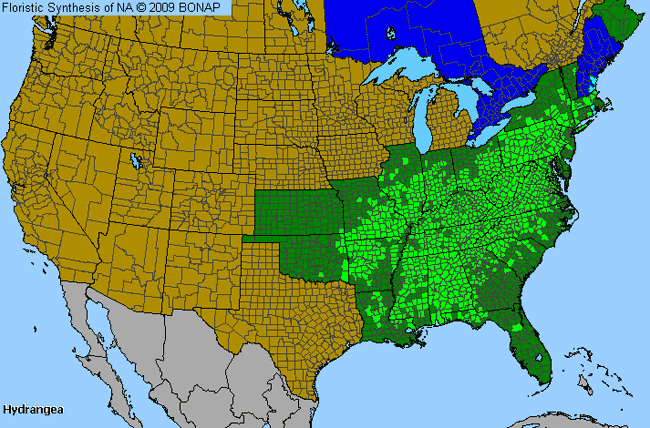Hydrangea (Hydrangea)

Hydrangea Genus Details

Hydrangeas are opposite-leaved shrubs and vines native to North America and Asia. The individual flowers are small and arranged in clusters of varying size. In some species, there are both sterile 'ray' flowers and fertile flowers in the same cluster. Hydrangea shrubs reach 3 to 9 feet in height while vines can reach 75 feet long. Herbalists originally used the roots and flowers as a diuretic, cathartic, and a tonic for removing stones in the bladder.
Hydrangea Allergy Info

Some reports associated hydrangea pollen with hayfever, but allergenic potential of this pollen is not well studied.
Hydrangea Pollen Description

Grains are prolate to subprolate; the amb rounded-triangular and 3-colpoeate. The grains are syncolpate and the ora is faint and lalongate. The sexine is reticulate; the lumina polygonal and smaller toward the apertures.
The grains are 15-17 x 10-14 micrometers in size.
Species in This Genus

Allergenicity Legend:
 Mild Allergen |
Mild Allergen |
 Moderate Allergen |
Moderate Allergen |
 Severe Allergen |
Severe Allergen |
 Allergy Test Available
Allergy Test Available
Hydrangea (Hydrangea) is a genus of the HYDRANGEACEAE family.
This genus includes the following allergenic species:
This genus includes the following allergenic species:













